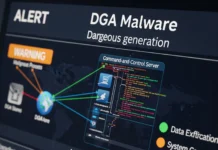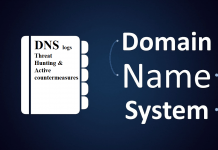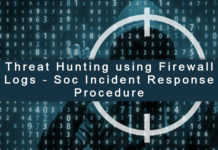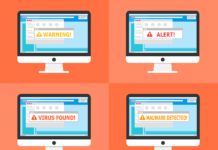Today’s cloud environments span multiple providers, integrate with on-premises infrastructure, and support a workforce that connects from anywhere in the world. This expanded attack surface presents unprecedented security risks that traditional perimeter-based approaches simply can’t address. The distributed nature of cloud resources, combined with the rapid pace of deployment and the shared responsibility model between cloud providers and customers, creates security blind spots that malicious actors are quick to exploit.
This post examines the most pressing cloud network security challenges facing organizations today and provides actionable strategies to overcome them without compromising the agility and scalability that drew businesses to the cloud in the first place.
Data Protection in Transit and at Rest
Cloud environments naturally involve constant data movement – between services, applications, users, and different cloud providers. This creates numerous opportunities for data interception or unauthorized access, particularly when malicious actors attempt lateral movement within systems after gaining initial access points.
Traditional encryption methods often fall short in cloud infrastructure due to the complexity of key management across distributed systems. Additionally, organizations struggle to maintain consistent encryption policies across multi-cloud deployments, leading to potential gaps in protection. The challenge is compounded by regulatory requirements that mandate specific data protection standards depending on data type and geographic location.
To overcome these challenges, organizations should implement a comprehensive encryption strategy that includes both transport layer security (TLS) for data in transit and strong encryption for data at rest. Using a centralized key management service that integrates with multiple cloud providers helps maintain consistent encryption standards. Also, consider adopting a zero-trust approach as a fundamental security principle where all access requests are verified regardless of origin.
Additionally, data classification tools can help pinpoint sensitive information that requires enhanced protection, allowing for targeted security measures rather than a one-size-fits-all approach that might impact performance unnecessarily.
When implementing these strategies, many organizations find value in partnering with a reputable cloud network security provider. They can offer specialized expertise in safeguarding data both in transit and at rest, ensuring compliance with industry regulations while maintaining operational efficiency. This collaboration often helps security teams stay ahead of evolving cyber threats while focusing on their core business objectives.
Identity and Access Management Complexity
Managing who can access what resources, under which conditions, and with what level of permissions has grown exponentially more complex with cloud adoption. The distributed nature of cloud resources means that access controls are often inconsistent across environments, leading to permission sprawl. One instance is that businesses can benefit from a Los Angeles cloud solutions that deliver practical solutions across multiple areas—from unifying access policies to monitoring permissions and providing expert guidance on compliance—so teams can focus on growth without security gaps.
Many organizations struggle with over-privileged accounts – granting more access than necessary because managing granular permissions is too difficult. This creates unnecessary risk, as compromised credentials can lead to extensive damage. Service accounts present particular challenges, as they often have significant privileges and may not be subject to the same security controls as human users.
Here’s how to address these challenges:
- Utilize just-in-time access and privilege elevation rather than standing permissions.
- Embrace the principle of least privilege by default, ensuring users and services have only the access they need to perform their functions.
- Leverage cloud-native identity services that offer conditional access controls based on factors like location, device health, and risk signals.
Regular access reviews and automated deprovisioning of unused accounts or excessive permissions are also essential practices to maintain security hygiene.

Visibility and Monitoring Across Hybrid Environments
Traditional monitoring tools designed for on-premises infrastructure often lack the capability to effectively monitor cloud resources, creating dangerous blind spots.
The ephemeral nature of cloud resources adds another layer of complexity – containers, serverless functions, and auto-scaling resources may exist only briefly, making them difficult to track and monitor. Additionally, each cloud provider offers different native monitoring tools with varying capabilities and interfaces, making it challenging to establish consistent monitoring practices.
That said, invest in cloud-native security platforms that provide unified visibility across multi-cloud environments. Implement comprehensive logging and monitoring practices that capture not just security events but also configuration changes and resource utilization patterns that might indicate security issues. Moreover, security information and event management (SIEM) solutions with cloud integration capabilities can aggregate and correlate events across environments to detect threats that might otherwise go unnoticed.
Consider implementing cloud security posture management (CSPM) tools as well. These can continuously monitor cloud resource configurations against security best practices and compliance requirements.
Container and Microservices Security
The adoption of containers and microservices architectures has revolutionized application development and deployment but introduced new security challenges.
Organizations struggle to secure container images, manage vulnerabilities in the container ecosystem, and control network traffic between microservices. The rapid pace of container deployment often outpaces security reviews, leading to vulnerable containers in production environments.
Here’s how you can navigate these problems:
- Shift security left by integrating vulnerability scanning into your CI/CD pipeline to identify issues before deployment.
- Implement a zero trust network model with micro-segmentation to control traffic between microservices.
- Utilize container-specific security tools that understand the unique attributes of containerized applications.
- Maintain a secure registry of pre-approved container images and enforce policies that prevent the deployment of unauthorized or vulnerable containers.
In addition, service mesh technologies can help enforce consistent security policies across microservices by centralizing authentication, authorization, and encryption.
Conclusion
With proactive strategies and the right tooling, organizations can safely harness the power of cloud computing without compromising security posture. The key lies in adapting security approaches to the distributed, dynamic nature of cloud environments rather than attempting to force-fit traditional security models.
Remember that cloud security is a shared responsibility – understanding where provider responsibilities end and yours begin is crucial for ensuring there are no gaps in your security coverage. As cloud environments continue to evolve, security strategies must remain flexible and forward-looking, continuously adapting to address emerging threats and technological changes.



































